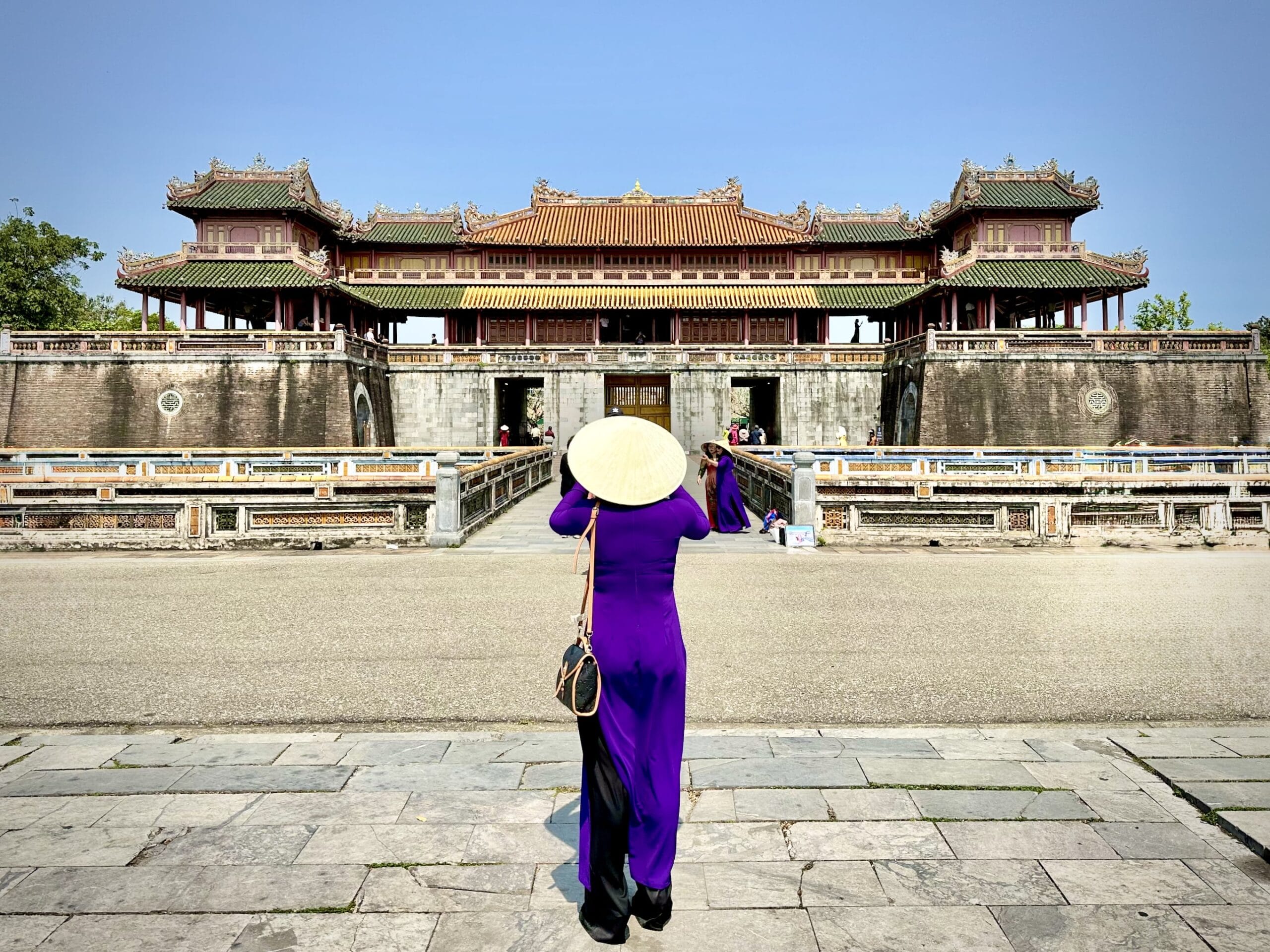Vietnam stood as the crown jewel of our Southeast Asian adventure with Andrea – we immersed ourselves in this captivating country for two vibrant weeks during March, determined to experience its most breathtaking landscapes and cultural treasures.
Though we ultimately stayed for 16 unforgettable days, you can easily condense this journey into a perfect two-week adventure by simply omitting our beachside retreat to Phu Quoc (which we had included as a mid-journey respite before continuing to Cambodia).
Quick Facts About This Trip
- Total Distance: Approximately 2,400 km (1,500 miles) traversing the country’s slender geography
- Budget: $60-80 per person per day (mid-range accommodations and dining)
- Best Time to Visit: February-April or September-November (the sweet spots between scorching summers and drenching monsoons)
- Transportation: A delightful medley of planes, trains, boats, buses, and bicycles
- Visa: E-visa available for most nationalities with straightforward online application
- Language: Vietnamese dominates, but English flourishes in tourist hubs and younger generations
- Ideal For: Culinary adventurers, history enthusiasts, cultural explorers, and beach aficionados
- Terrain: A dramatic tapestry from misty northern mountains to lush southern deltas and golden coastlines
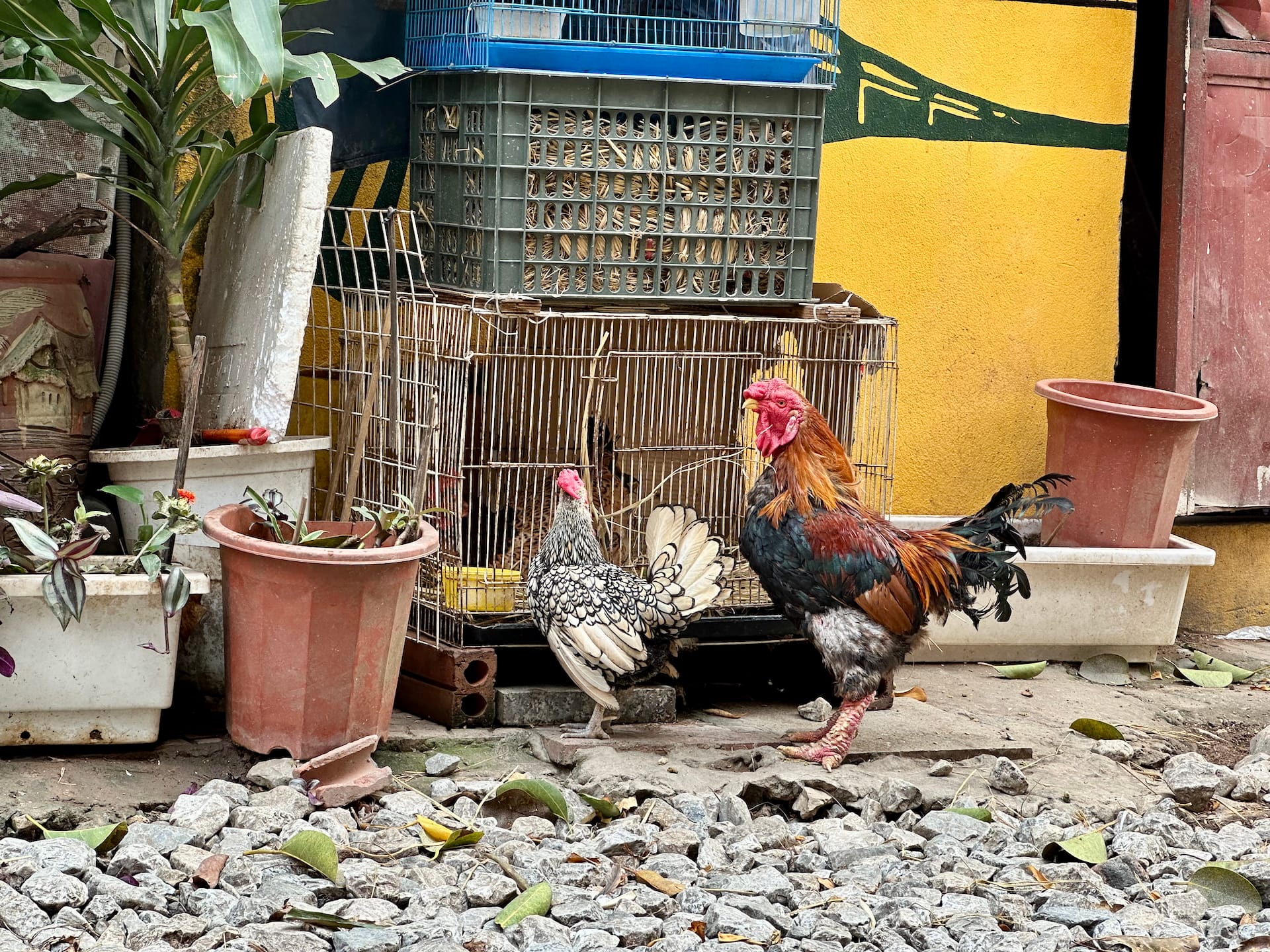
Planning Your Vietnamese Adventure
Vietnam’s distinctive geography – resembling an elongated ‘S’ hugging the South China Sea – naturally lends itself to a directional journey. We opted for the north-to-south route, though the entire itinerary functions beautifully in reverse. The northbound approach offers one notable advantage: Hanoi’s somewhat gentler rhythm provides a softer landing for travelers new to Southeast Asia’s intoxicating intensity, sparing you the immediate sensory overload of Ho Chi Minh City’s frenetic energy.
Our expedition embraced Vietnam’s transportation kaleidoscope (or would have, barring a few unexpected detours): from wobbling through rice fields on rented bicycles to overnight trains chugging through mountain passes, boats navigating limestone labyrinths, and domestic flights between distant regions. The country’s transportation network proves quite efficient and astonishingly affordable, connecting every worthwhile destination – if not always with lightning speed. We’ll soon unveil a comprehensive guide to Vietnam’s practical essentials.
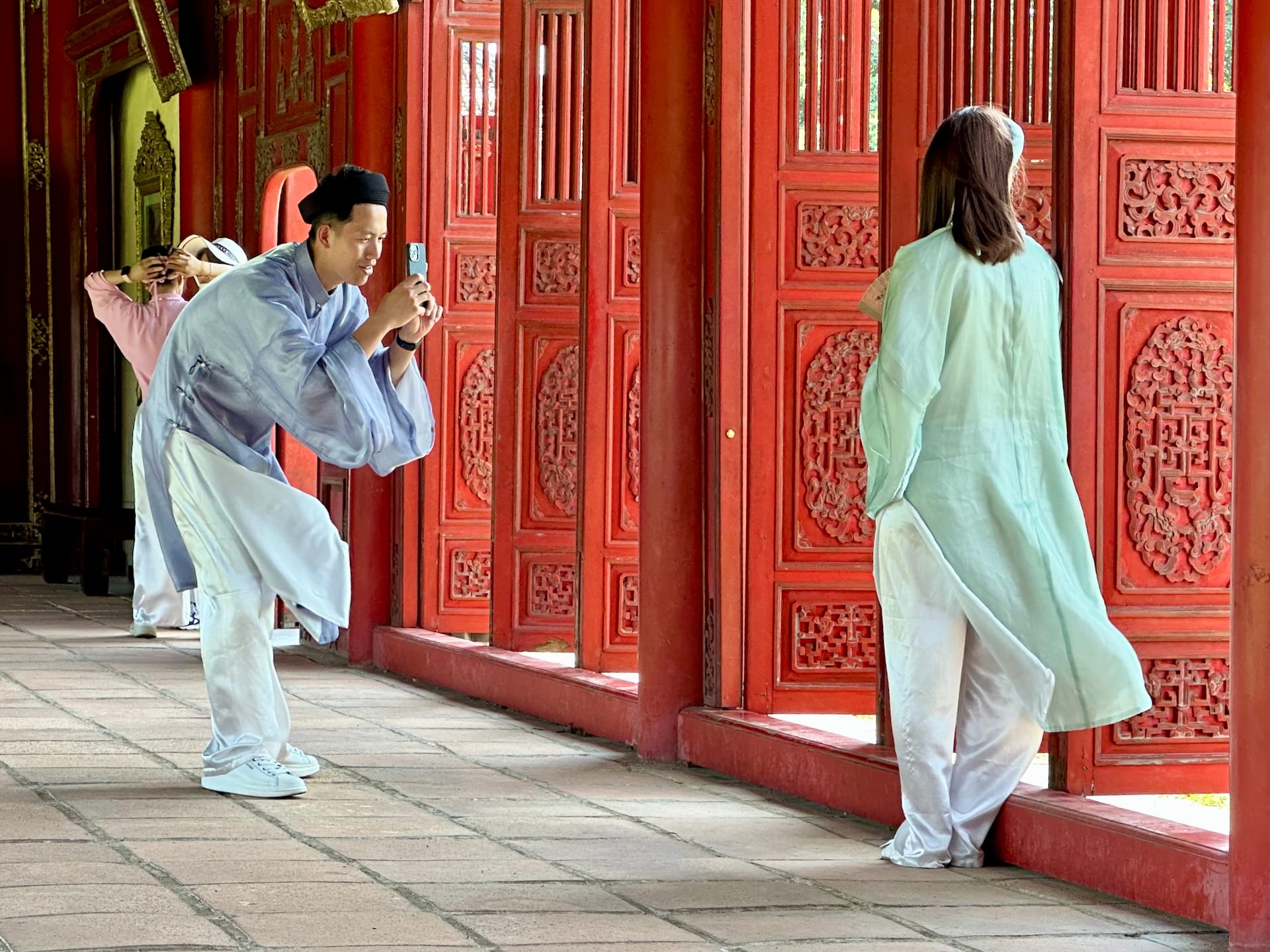
Vietnam Itinerary at a Glance
First Half: Northern Vietnam
- Days 1-3: Hanoi – Ancient alleys and colonial grandeur
- Days 3-4: Ha Long Bay – Cruising among limestone giants
- Days 4-6: Ninh Binh (Tam Coc) – Mystical waterways through rice paddies
- Days 6-8: Hue – Imperial splendor and dynastic echoes
Second Half: Central and Southern Vietnam
- Days 8-9: Da Nang – Modern skylines meet pristine beaches
- Days 9-11: Hoi An – Lantern-lit streets frozen in time
- Days 11-14: Phu Quoc – Island escapism (optional)
- Days 14-17: Ho Chi Minh City (Saigon) – Pulsating urban energy with historic depth
Detailed Day-by-Day Itinerary
Days 1-3 – Hanoi: Gateway to Vietnam
Our Vietnamese odyssey began in Hanoi, where we instantly succumbed to the seduction of the city’s legendary egg coffee and plunged headfirst into Vietnam’s culinary wonderland. Following our tried-and-true tradition, we joined a free walking tour, wandered through incense-clouded temples and soaring pagodas, and visited the Ho Chi Minh Mausoleum with its huge square.
Hanoi unfolds like a living museum where the centuries collide – French colonial elegance stands shoulder-to-shoulder with ancient Confucian temples while motorcycle armies navigate labyrinthine streets. The Old Quarter’s 36 guild streets offer endless discoveries, from artisans practicing centuries-old crafts to hidden courtyard cafés where time seems suspended.
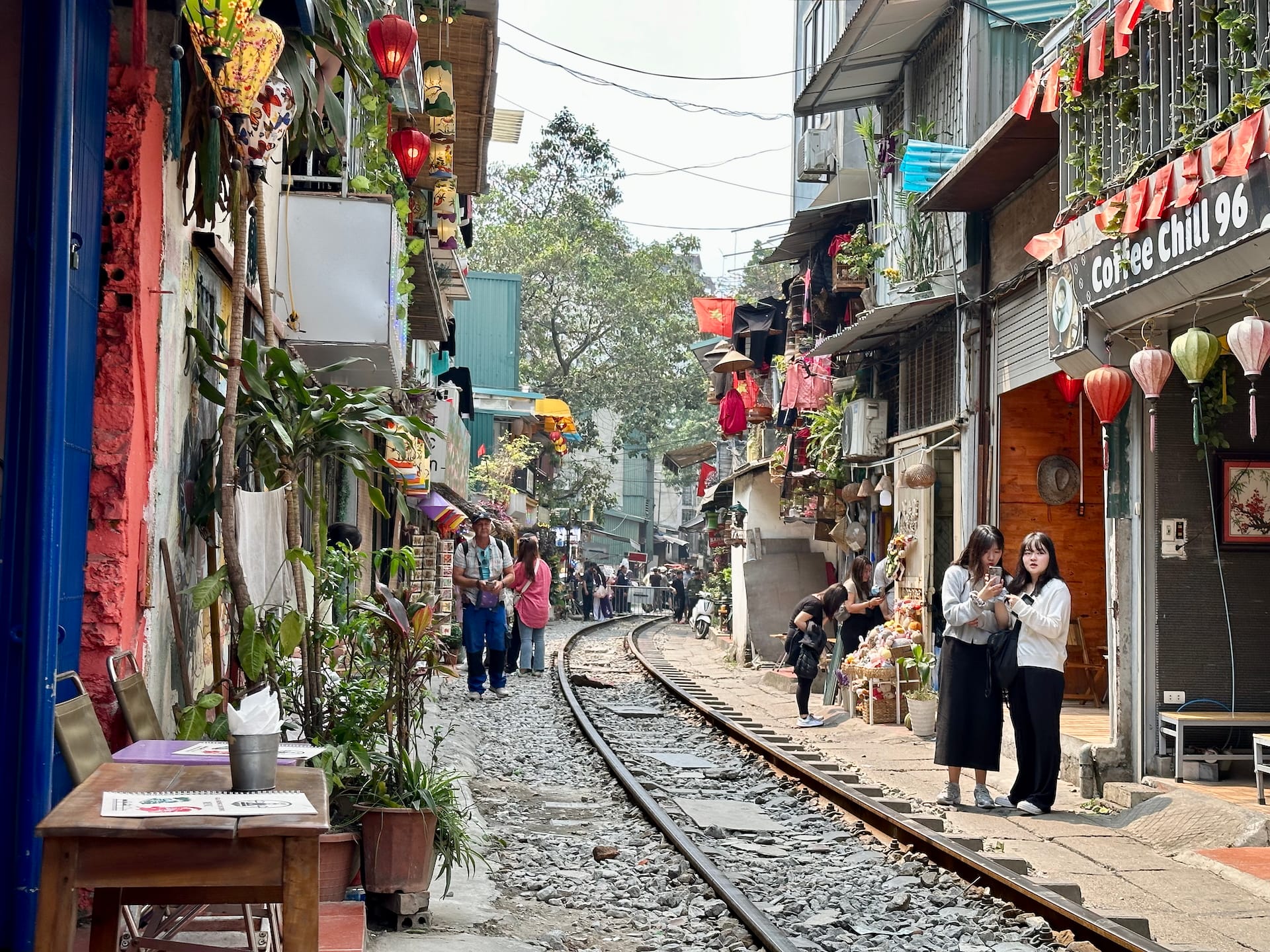
Days 3-4 – Ha Long Bay: Limestone Island Paradise
No trip to northern Vietnam would be complete without a cruise through Ha Long Bay. We left early on the fourth day – our cruise package included a pickup from our Hanoi hotel. The journey takes about two and a half hours (depending on Hanoi traffic) but is totally worth it. From the bus, we boarded our overnight cruise ship to explore Ha Long Bay. The staff was incredibly friendly, the service excellent, and the scenery absolutely stunning.
On the first day, we went kayaking and enjoyed an amazing dinner before trying our hand at squid fishing. The next morning, we took a boat ride to a smaller bay, before returning to the harbor.
From there, we got on a bus and headed straight to Tam Coc, arriving in the afternoon.
Book your Ha Long Bay cruise a few weeks ahead, especially during high season. The quality difference between budget and mid-range options is really noticeable, so spending a bit more for a better experience is worth it.
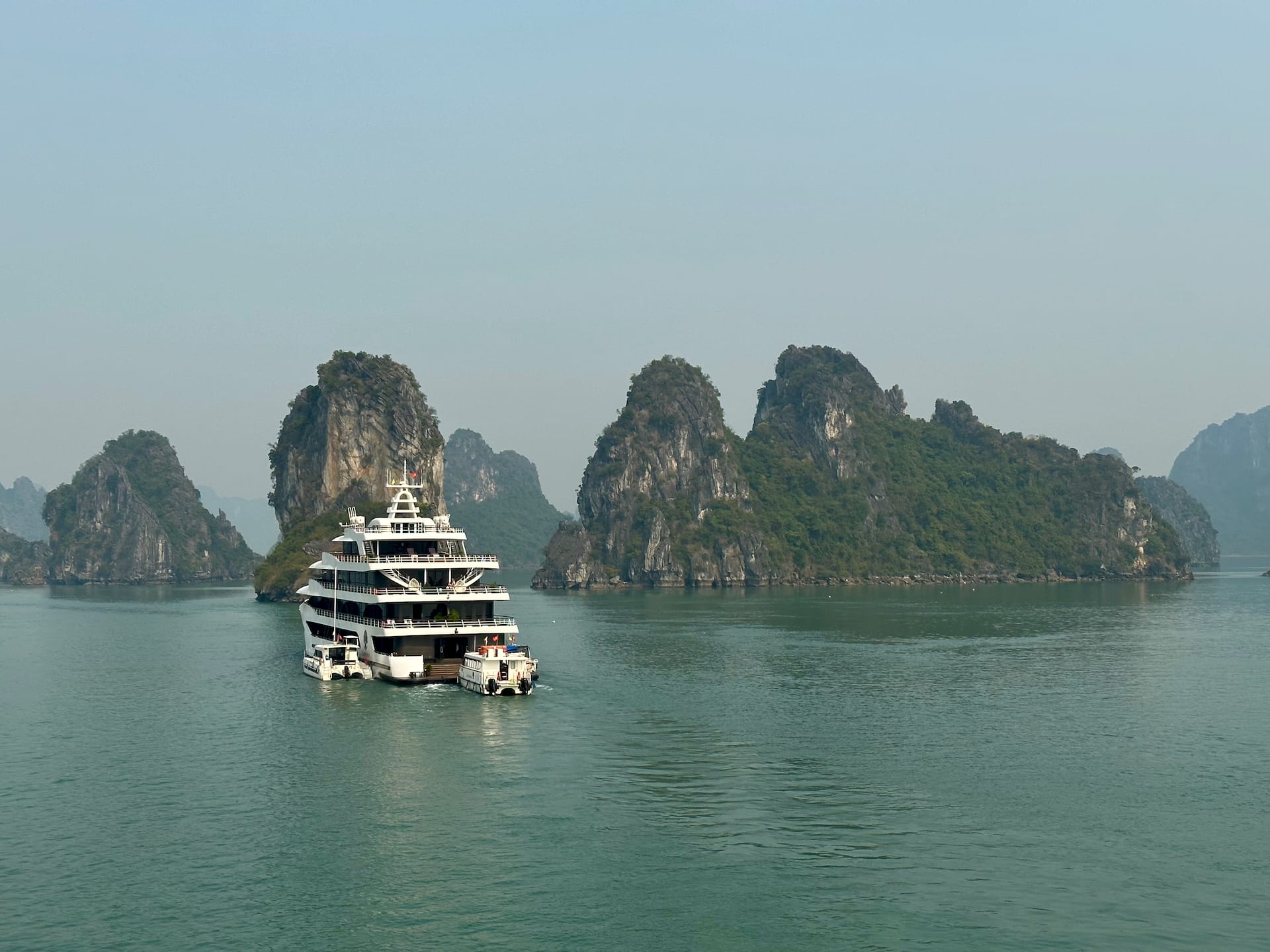
Days 4-6 – Ninh Binh (Tam Coc): “Ha Long Bay on Land”
We spent two nights in Tam Coc. We explored the area by bicycle (rented from our guesthouse), riding through rice fields, and enjoyed the famous valley with its impressive limestone rocks. We also took a ride on the foot-powered boats and visited the Bich Dong Pagoda.
Unfortunately, we couldn’t travel directly to our next stop from here, so we had to take a bus back to Hanoi before flying to Hue.
The best time for photos in Tam Coc is early morning (6-8 AM) when there’s often mist over the water and fewer tourists on the river. Bring small bills for tipping your boat rower.
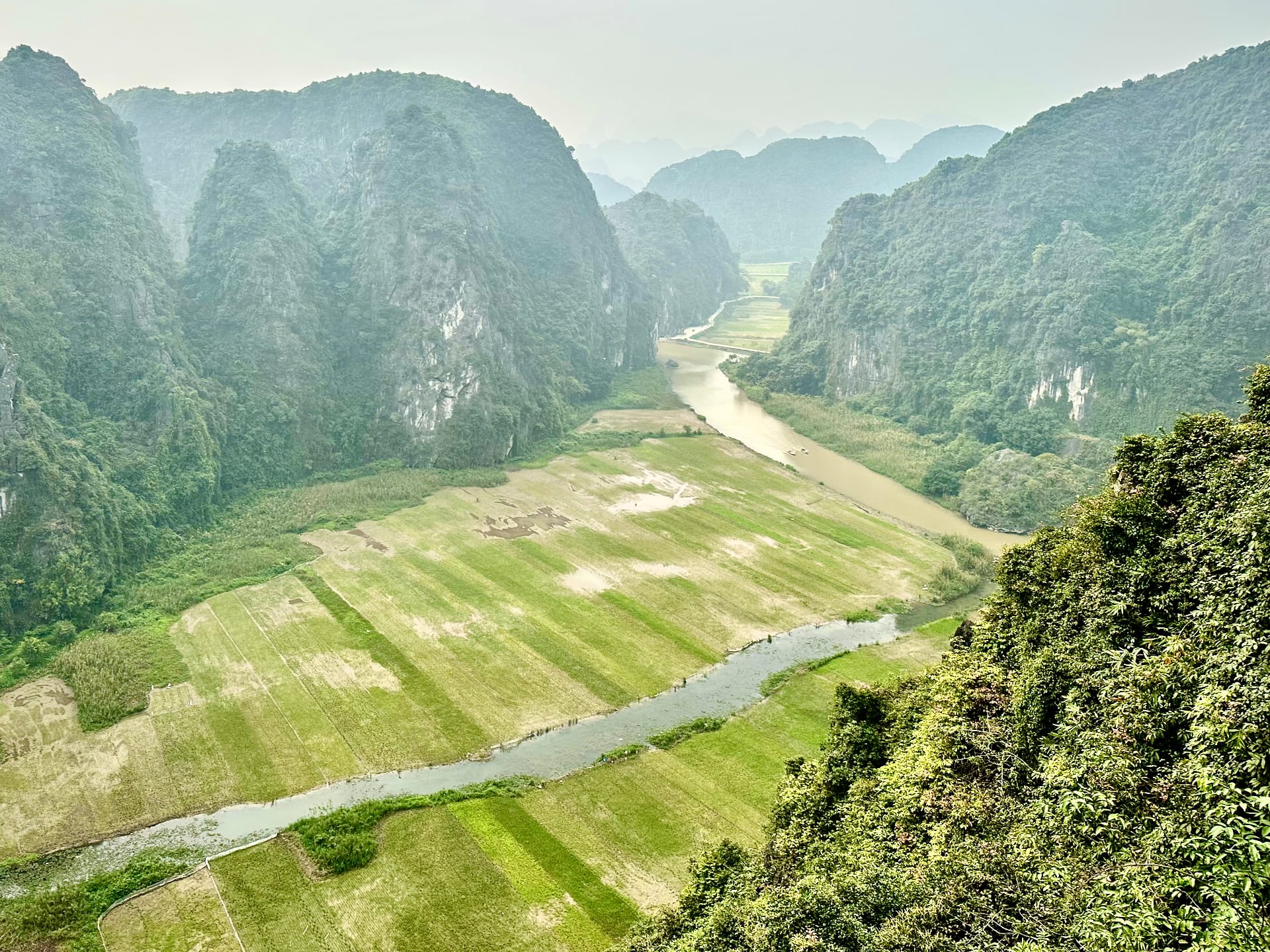
Days 6-8 – Hue: The Imperial City
Our imperial interlude originally allocated just two nights (essentially one full day) in Vietnam’s former royal capital, but fate had other designs, delivering an unwelcome lesson in local microbiology. We arrived as evening painted the Perfume River in watercolor hues, planning to dedicate the following day to exploring the sprawling Imperial Citadel and perhaps several royal mausoleums scattered across the countryside.
The Citadel’s magnificent exploration proceeded according to plan (thankfully, as its splendor cannot be overstated!), but a seemingly innocent banana pancake from a nearby vendor unleashed such gastronomic distress that our morning train to Da Nang departed without us. Consider this particular detour optional in your own itinerary!
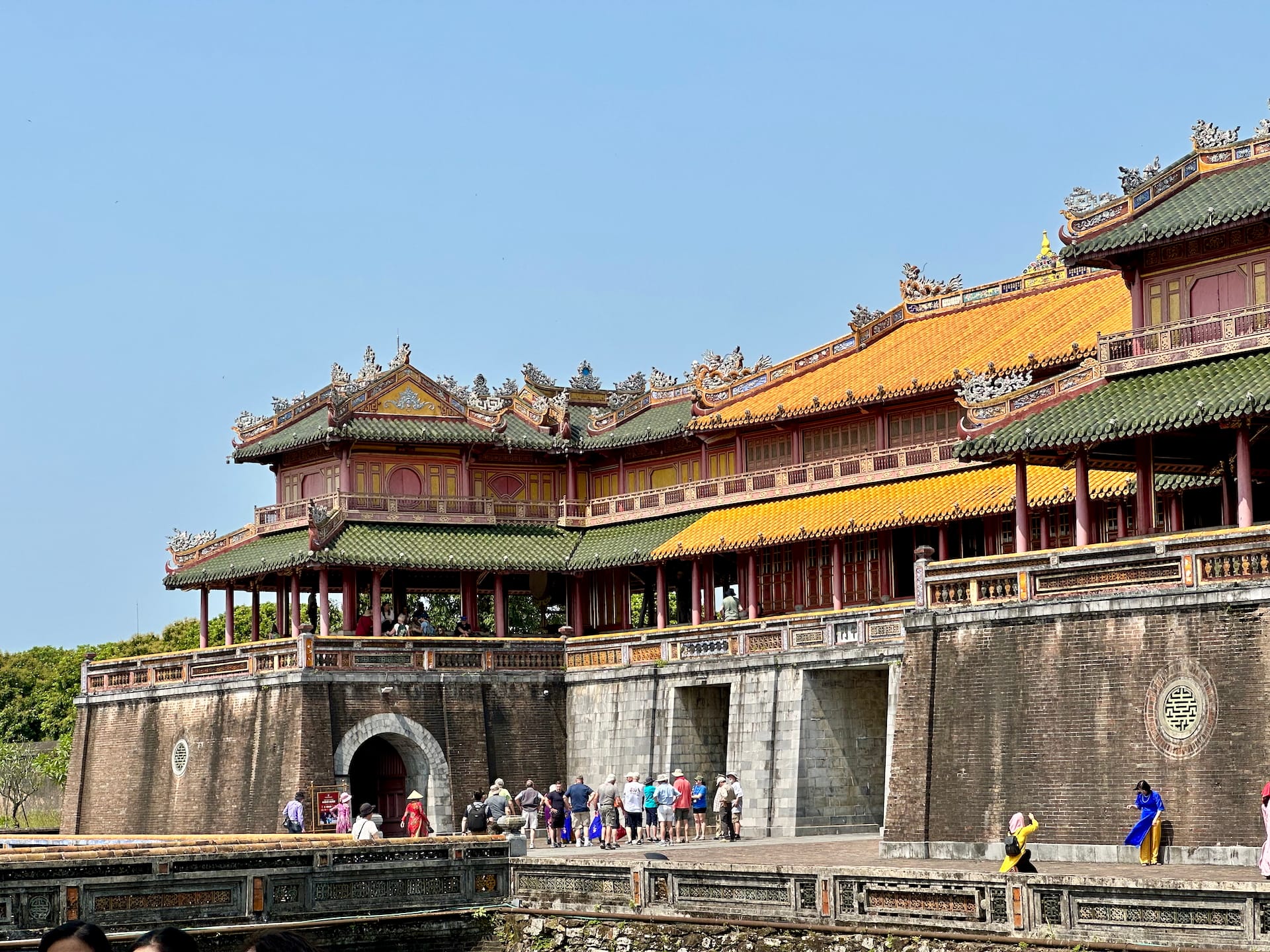
Days 8-9 – Da Nang: Modern Coastal City
Our meticulously crafted original blueprint would have seen us departing Hue aboard an early morning train, climbing the legendary Hai Van Pass where mist-shrouded mountains plunge dramatically into the East Sea (secure window seats on the left side heading south for nature’s spectacular cinema). A single night in Da Nang – Vietnam’s rapidly ascending metropolis where gleaming skyscrapers frame pristine coastlines – promised beachside relaxation, exploration of the mystical Marble Mountains, and evening admiration of the fire-breathing Dragon Bridge. While we eventually checked most experiences off our list, our Da Nang overnight evaporated with our adjusted timeline, replaced by a direct bus excursion to Hoi An (which aligned with our original transportation plan anyway).
The Dragon Bridge transforms from architectural feat to mythical spectacle every Saturday and Sunday at 9 PM sharp, when its massive steel dragon head unleashes impressive flames and water vapor across the Han River. Stake your viewing territory along the eastern riverbank for unobstructed views of this modern Vietnamese attraction.
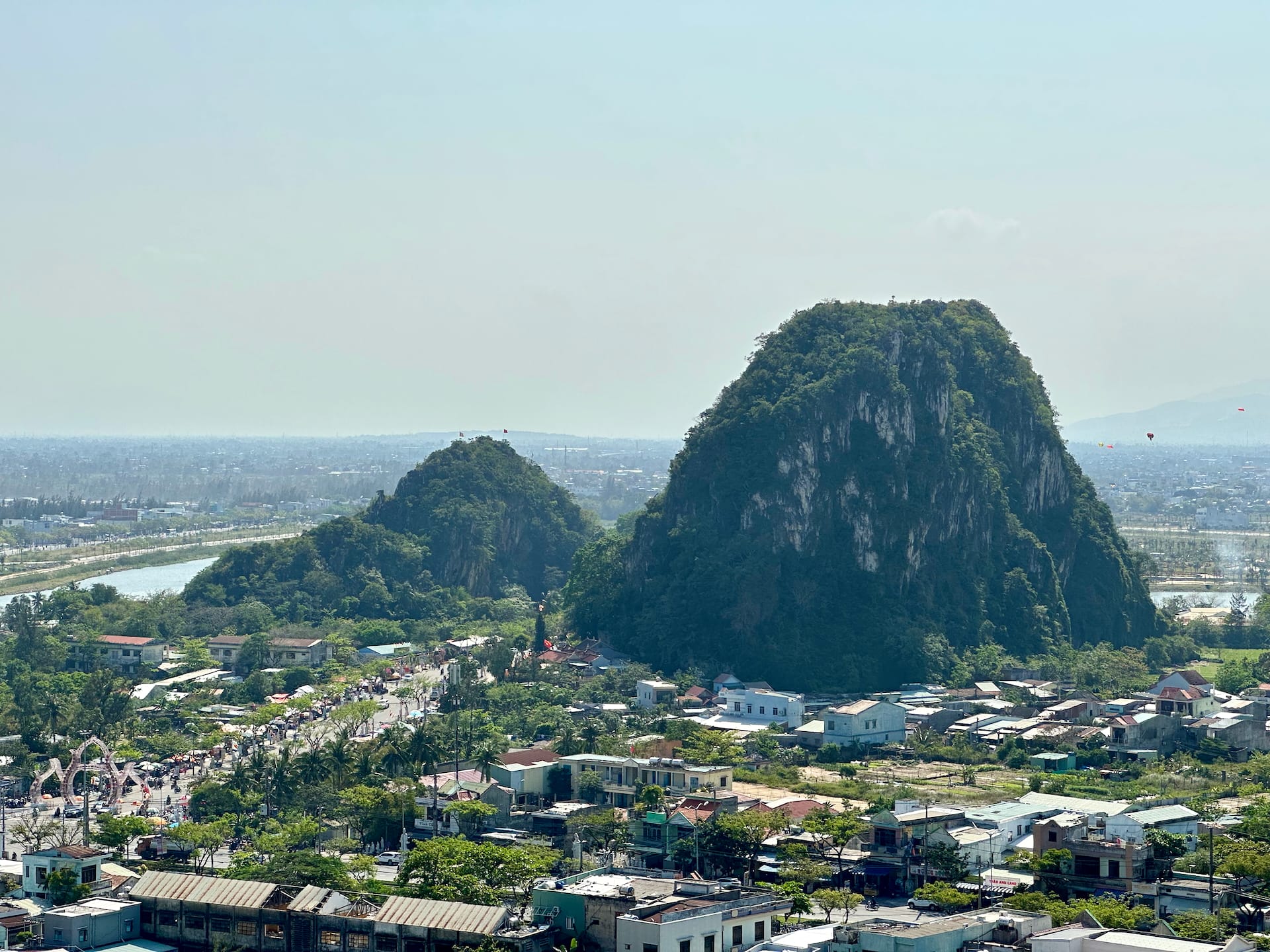
Days 9-11 – Hoi An: Ancient Trading Port
Central Vietnam’s enchanted ancient port became our next haven, our health mercifully restored. To call Hoi An merely “famous” understates reality dramatically – throughout our extensive Vietnamese journey, nowhere else attracted such concentrated tourist devotion. The UNESCO-protected town and its gentle river, illuminated by thousands of lanterns each evening, undeniably earns its reputation for ethereal beauty, though high season transforms it into mass tourism’s poster child. When the ancient streets feel overly populated, the nearby coast offers pristine sandy escapes just a short ride away.
You absolutely must try Hoi An’s local dish: cao lau. It has become our all time favorite vietnamese food.

Days 11-14 – Phu Quoc: Island Paradise (Optional)
From Hoi An, we journeyed to Da Nang’s modern airport and winged southward to Vietnam’s island paradise, hovering alluringly close to Cambodian shores. This segment represents the most dispensable portion of our itinerary, though we treasured this brief respite approximately halfway through our Southeast Asian expedition.
If Hoi An exemplifies mass tourism’s historical variant, Phu Quoc demonstrates its purpose-built resort incarnation. The island brims with manufactured attractions – a gondola system soaring above archipelago vistas, splash-filled waterparks, snorkeling excursions, and resort complexes spreading along western shores.
We stayed at one of the resorts on the western side of the island to rest up – which is pretty unusual for us – but we did make it to the eastern side where we found a beautiful white sand beach where we had the place completely to ourselves.
While Phu Quoc’s western beaches host the majority of development and amenities, the eastern and northern coastlines guard the island’s remaining natural treasures. Consider renting a motorbike for approximately 100,000-150,000 VND (~4-6 USD) to discover secluded coves and fishing villages where traditional island rhythms persist largely untouched by tourism’s transformation.
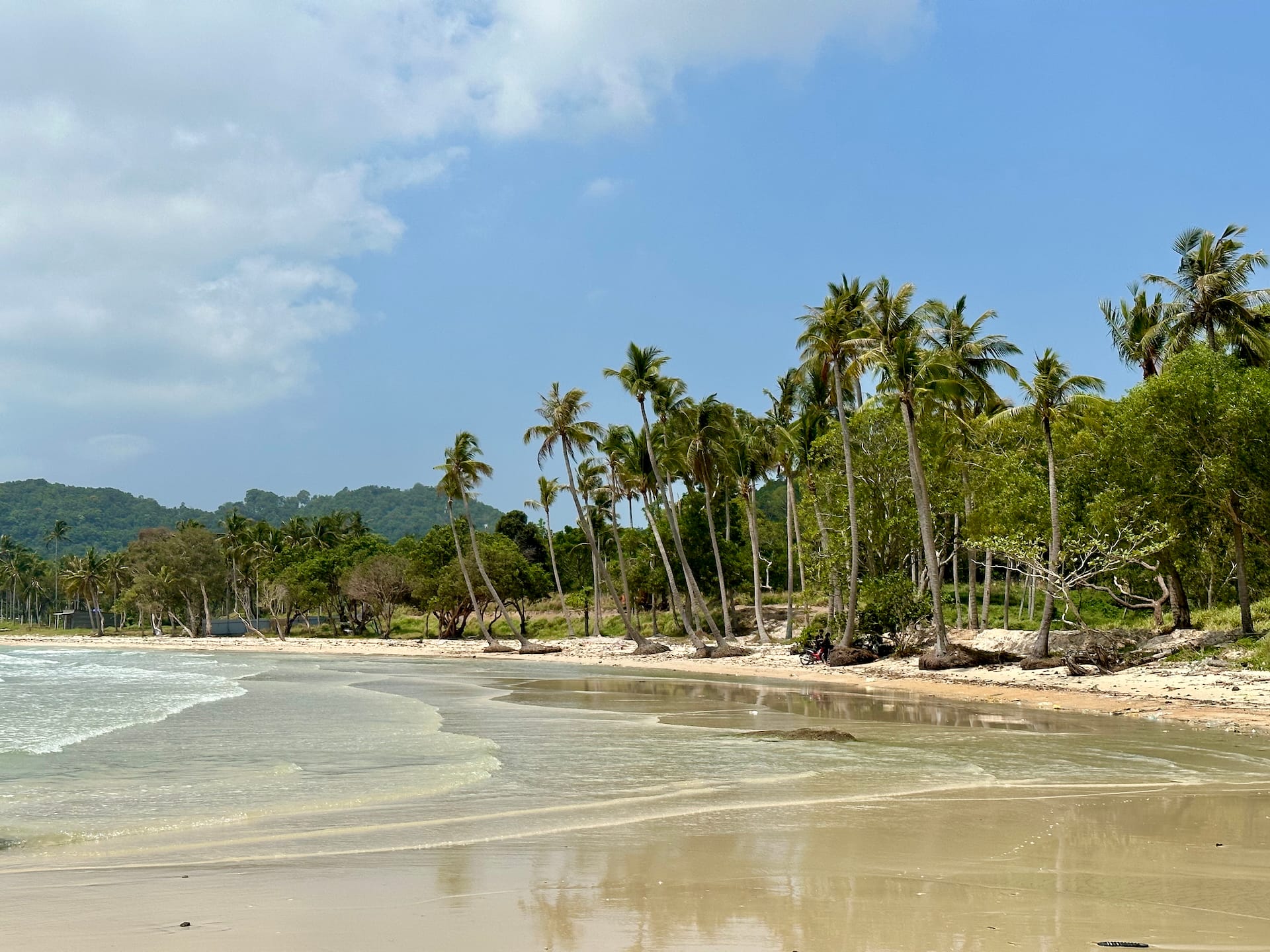
Days 14-17 – Ho Chi Minh City (Saigon): The Southern Hub
From Phu Quoc’s island tranquility, we soared directly into Vietnam’s southern megalopolis – Saigon (officially Ho Chi Minh City or HCMC). Here, Vietnam’s commercial heart beats with unmistakable intensity – a city operating at a noticeably accelerated tempo compared to Hanoi’s more measured pace. The southern capital pulses with energetic nightlife, entrepreneurial spirit, and an endless parade of culinary temptations from sidewalk pho vendors to sophisticated rooftop establishments.
True to tradition, we joined a free walking tour to orient ourselves among the city’s historical landmarks. HCMC further serves as the gateway to essential day excursions including the labyrinthine Mekong Delta and the sobering Cu Chi Tunnels, where we gained intimate perspective on the incredible ingenuity and determination of Viet Cong fighters through their elaborate underground network and jungle traps.
Crossing Saigon’s legendary street ballet initially appears to require superhuman courage. The secret lies in confidence and consistency – maintain steady, predictable walking pace without sudden movements or hesitation. The river of motorbikes will miraculously flow around you like water around stones. Trust the system, breathe deeply, and soon you’ll navigate like a local.
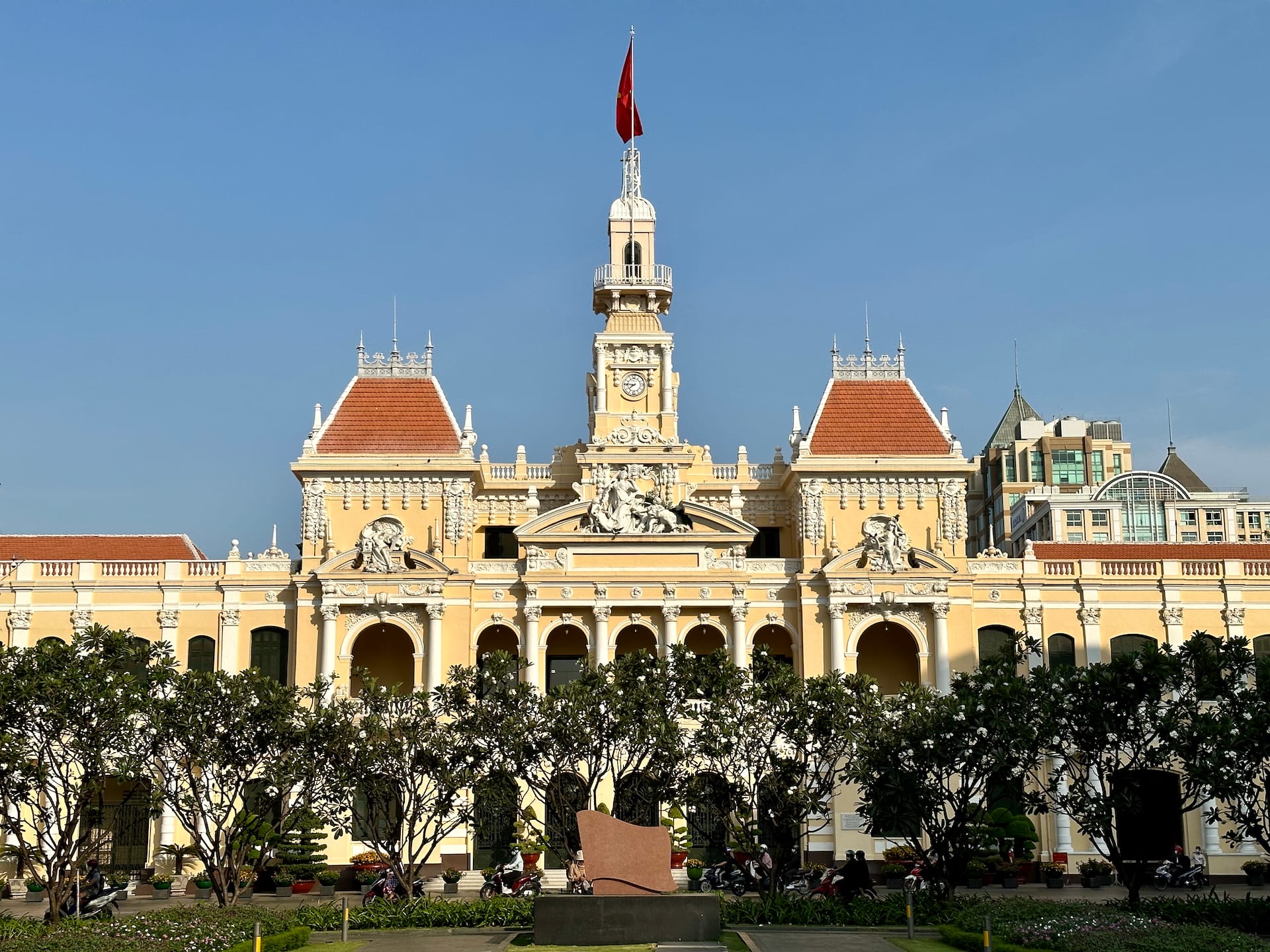
Beyond Two Weeks: Expanding Your Vietnamese Journey
For travelers blessed with additional time, Vietnam’s treasures continue unfolding beyond our core itinerary. Consider ascending to Sapa’s mist-wrapped highlands for rice terrace trekking and authentic homestays with ethnic minority communities. Mui Ne beckons with its remarkable Sahara-like sand dunes contrasting dramatically with azure waters. Beach enthusiasts might linger in Nha Trang’s resort corridor, while those seeking cooler climes and French colonial nostalgia can explore Da Lat’s pine-scented highlands.
A three-week Vietnamese immersion would comfortably incorporate these compelling detours while allowing breather days between destinations – essential moments to process the kaleidoscopic sensory experiences that define Vietnamese travel.
Best Time to Visit Vietnam
Vietnam’s elongated geography creates distinct climate zones requiring strategic timing:
- Northern Vietnam (Hanoi, Ha Long Bay): October to December delivers cool, dry weather (however it can get quite cold!), while March and April offer warming temperatures with minimal rainfall
- Central Vietnam (Hue, Da Nang, Hoi An): February through July provides optimal weather windows before summer’s intense heat and autumn’s potential flooding
- Southern Vietnam (Ho Chi Minh City): December through April brings dry, manageable heat before the seasonal monsoon transforms city streets into temporary canals
Our March exploration blessed us with generally favorable conditions throughout our north-south trajectory – comfortable temperatures with occasional refreshing showers but no weather-related disruptions.
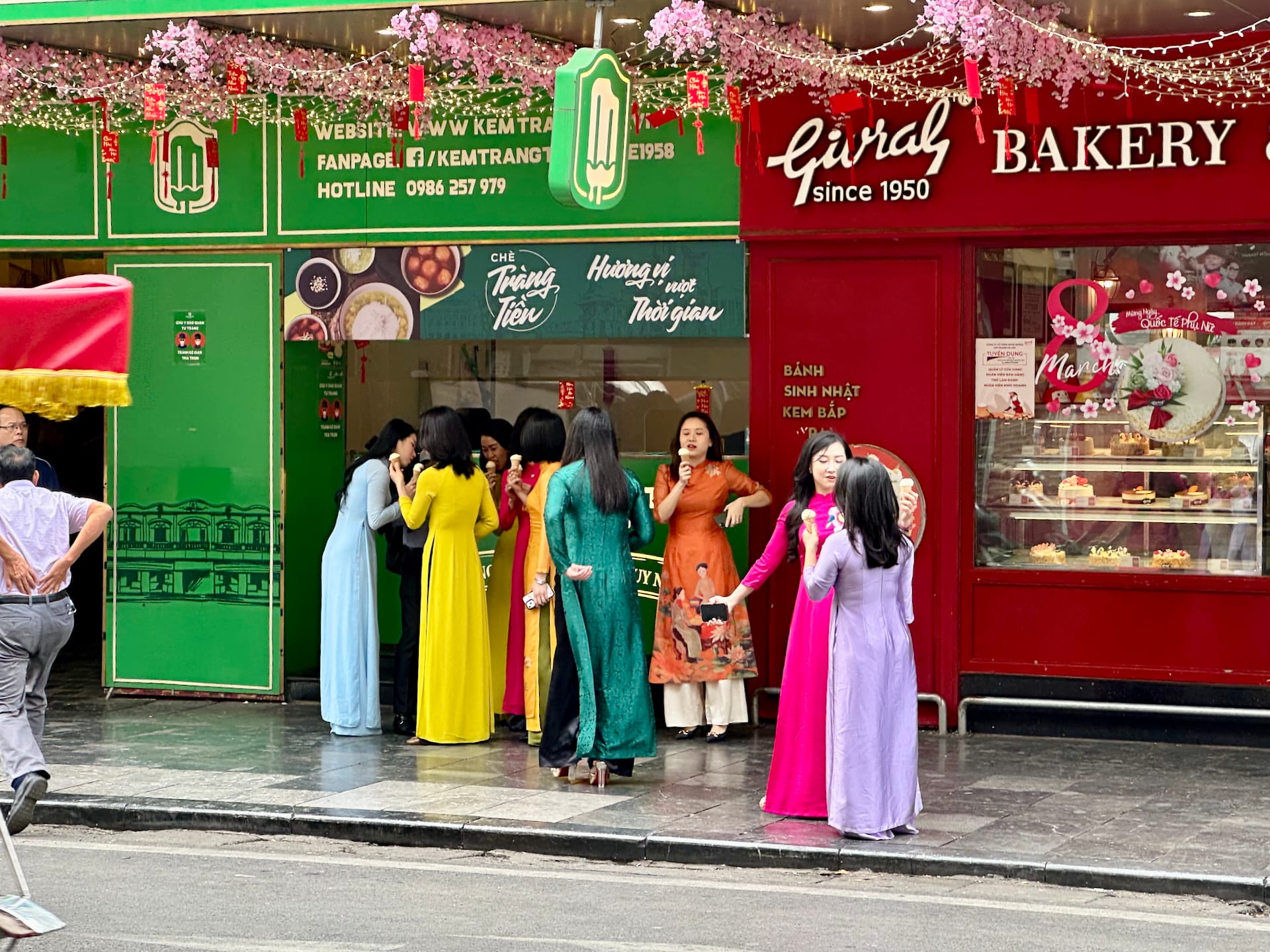
Final Thoughts
Vietnam condenses an extraordinary diversity of experiences into its slender geography – from the mist-shrouded mountains of the north to the fertile abundance of the Mekong Delta, each region presents distinctive landscapes, culinary traditions, and cultural expressions.
Our two-week journey merely sampled the appetizer course of Vietnam’s grand feast, yet provided an exquisite introduction to its headline attractions. The country’s irresistible combination of breathtaking natural wonders, profound historical complexity, world-class cuisine, and genuinely welcoming people creates an accessible adventure for travelers seeking authentic encounters without premium price tags.
Whether you’re gliding among towering limestone sentinels in Ha Long Bay, tracing the footsteps of emperors through Hue’s majestic citadel, or navigating the organized chaos of Saigon’s intersection ballet, Vietnam etches memories that resonate long after your passport collects its departure stamp – leaving you plotting your inevitable return before you’ve even reached home.
